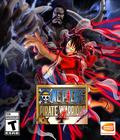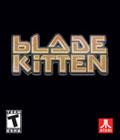In Blade Kitten, a prequel to the comics set three years prior; players are invited into the world of Hollow Wish where they take on the role of Kit Ballard, one of the best bounty hunters in the business. With her pink hair and tail, Kit is part cat, part girl - and fully lethal. As one of the last of her species, Kit commands her unique “Darque Blade” hovering sword to defeat enemies. Also along for the ride is Skiffy, Kit’s laid-back sidekick who lends a hand in collecting items, solving puzzles, and when needed, serves as Kit’s protector.
Blade Kitten goes beyond most downloadable titles to deliver a strong narrative, with high-quality cinematics, and a colourful, frenetic visual style, that lends to the pick-up-and-play arcade action. Players will jump right in and easily begin exploring and fighting their way through 19 levels, including three exploration levels with Noot (a rideable alien mount). Blade Kitten also features innovative gameplay mechanics, intuitive “scramble style” exploration, fully voiced dialogue, dramatic narrative and a powerful distinct anime-inspired visual direction.
Early in development, Blade Kitten was both a 3D and a 2D game and you could switch between them instantly — you’d run through a section then it would transition to 2D. It didn’t take us long to fall in love with the 2D version, so we focused all our efforts on making the 2D the fun game it is today.
From the start of the project, Krome Studios' goal as programmers was to give the designers all the power they needed to create the game that they wanted. Ideally, a level designer controls the player’s progression and experience in each area of the game (enemy placement, special events, collectables, and so on). So rather than implement a boss character’s attack moves myself, the designers would begive scripting tools to implement the boss themselves.
This proved to be one of the best decisions made. For example, the level where Kit is running away from a huge monster called Acland, who destroys everything in his path, was completely scripted by the designers — as were all our bosses and many of the encounters you see. This has allowed for a much more flexible design with changes being quick and easy. But most importantly, much happier designers!
Being able to move any object anywhere and have our characters move along with them was fundamental to the game, so Krome Studios made it so Kit can attach to pretty much everything. If the object moves or rotates, so does she. The level designers have done a great job using this and, even from the first level, you will see some fun movement and puzzles you can play with using these moving objects.
Blade Kitten was a re-think of how Krome Studios normally do artificial intelligence. As there is a single plane that everyone fights on, the devs needed to make all the enemies work together without getting in each other’s way. Therefore, you’ll see things like the front guy duck down so the guy behind him can take a shot, or even have one guy jump over another to try to aggressively get to you. They all work together which helps create an interesting experience without overwhelming the player. It’s important that the enemies in the game feel like they are alive and are planning their strategy together to form a real challenge to players.
It was fun to get physics working properly in a 2D environment. The game has some items which are fully 3D enabled and allowed to fly off into the yonder. Enemies have “ragdoll” effects that have them falling down in different ways when hit, and “fraggable” objects that break apart realistically. Additionally we have items that are fully physics-driven but stay on the player’s plane so you can use them without worrying about them flying away from you. This goes towards making the game world deeper, more detailed and unpredictable.
More articles about Blade Kitten











 Blade Kitten, based on Steve Stamatiadis' comic book series, is an action adventure game that invites players into the world of Hollow Wish, where they take on the role of Kit Ballard, one of the best bounty hunters in the business.
Blade Kitten, based on Steve Stamatiadis' comic book series, is an action adventure game that invites players into the world of Hollow Wish, where they take on the role of Kit Ballard, one of the best bounty hunters in the business.